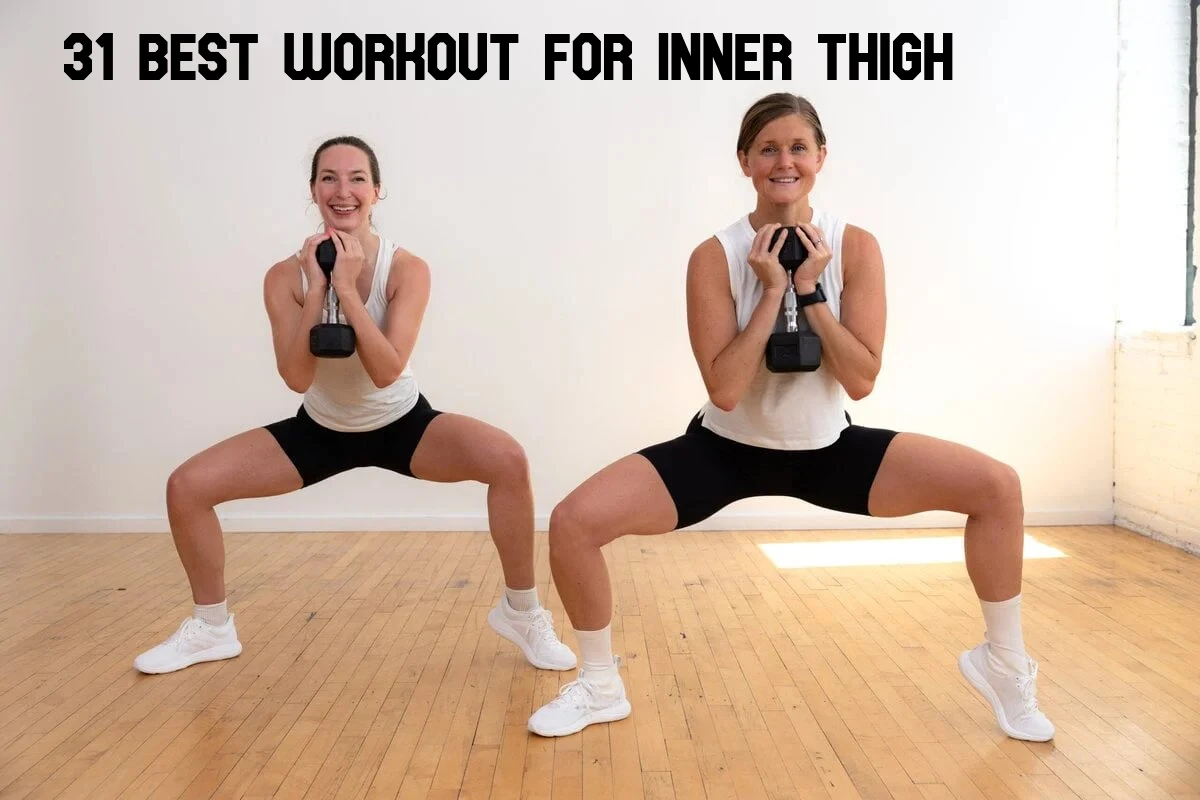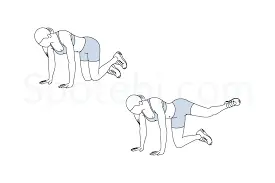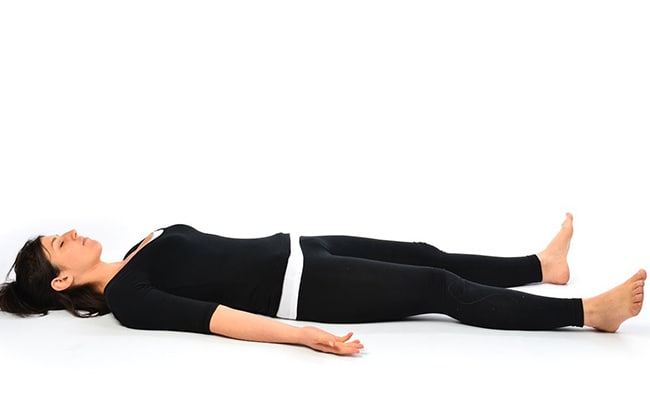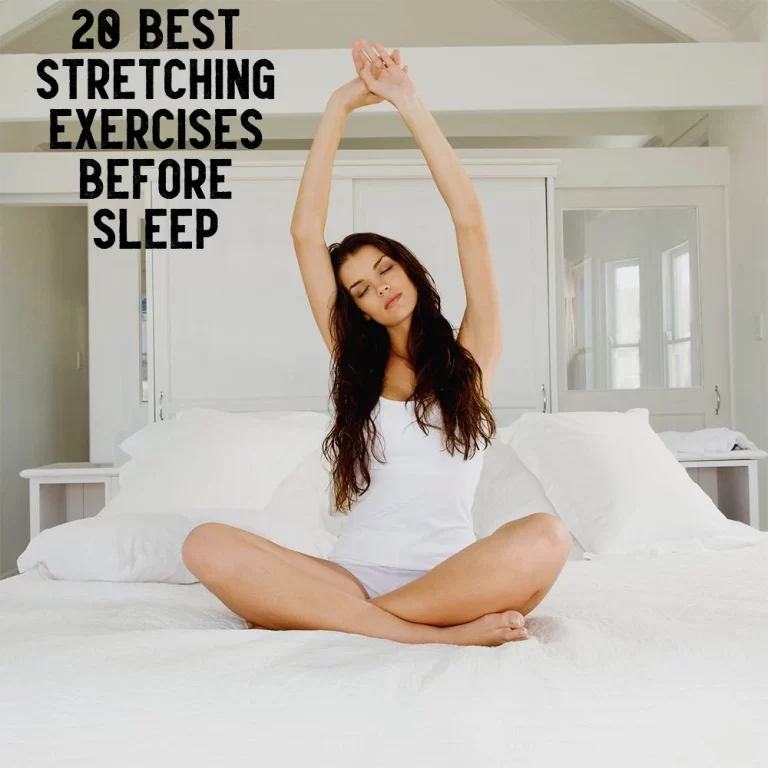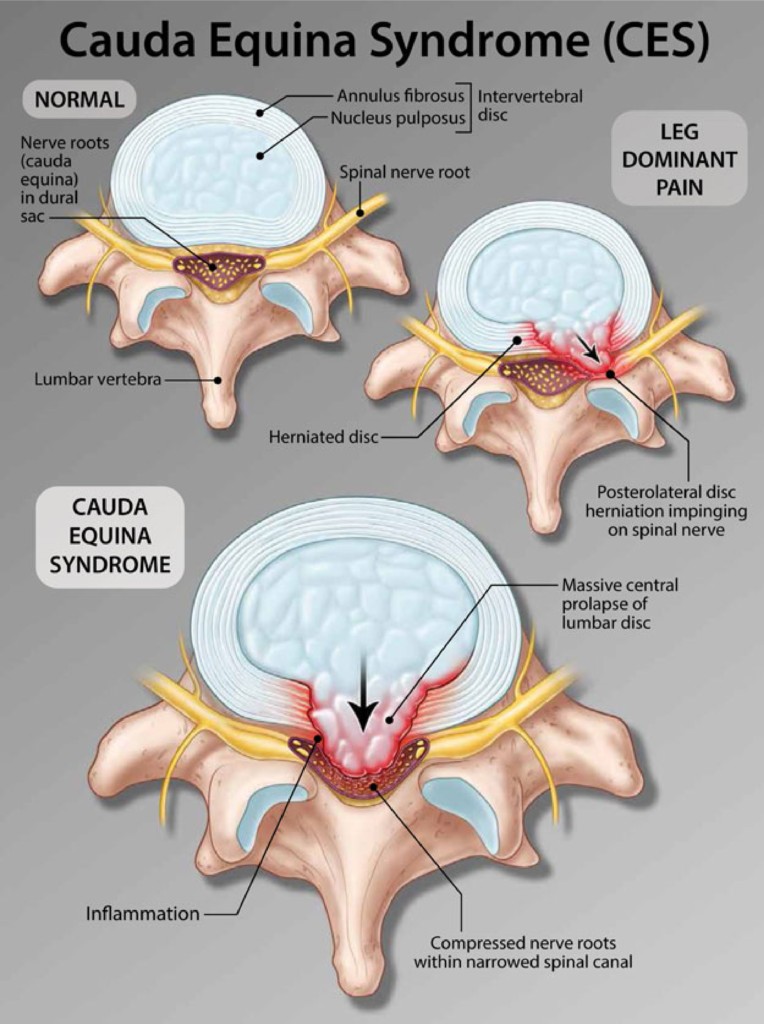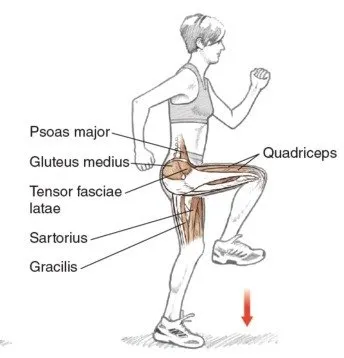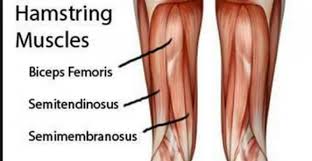31 Best Workout For Inner thigh
Table of Contents
Introduction
- Workouts for the inner thighs are made to target the difficult inner region of the leg.
- Many different workouts target this area, ranging from sumo squats to crab walks with a resistance band.
- Maintaining balance and strength in your legs and hips may be achieved by toning your inner thighs.
- Additionally, feeling like a rock starin’ your favorite jeans can be immensely fulfilling. Many training equipment and accessories are touted as miraculous inner-thigh toners, but the majority of them look too good to be true.
- Thus, we sought the advice of two fitness experts to find out whether inner-thigh workouts are truly beneficial.
- They assisted us in creating an excellent at-home workout for the inner thighs that don’t require a gym.
- The finest aspect? To begin started, you don’t need any expensive equipment.
- A ball or Pilates ring is recommended for several of these exercises, but a towel or little cushion will do just fine.
- A paper plate may function just as well as a gliding disc or slider, which helps offer an unstable surface to engage your legs during the sliding workouts.
- Before beginning these workouts, be sure you warm up with a ten to fifteen-minute jog or walk, and then get ready to exhaust your legs.
What are the best exercises for inner thighs?
- Some exercises work your inner thighs and other muscles, but there’s no one perfect workout.
- It’s not as hard as you would believe to tone your inner thighs.
- You can do complex exercises, which work numerous muscle groups, and isolation exercises, which concentrate on one area.
- A lateral lunge, for instance, focuses more on your inside thigh than most other exercises.
- Because of the sideways movement, it strengthens your abductors (outer hip muscles) and adductors inner upper thigh muscles more.
- Sagittal, frontal, and transverse are the three planes of motion that our body travels in, as Fitness Lab explains.
- The sagittal plane is where a lot of the lower body movements we perform take place [front to back].
- Ignoring the other two can cause injury over time, as well as muscle imbalances and inflexible joints.
- Not favorable. Even while they might not specifically target the inner thighs, other workouts will undoubtedly strengthen those adductors.
- Exercises like split squats, barbell squats, and sumo squats work the inner muscles of the upper body in addition to other muscles.
- Muscle tissue is sculpted and built through strength training, which involves working with resistance, but this is not the complete picture.
- In addition to strength training, it’s critical to ensure that you’re eating in a calorie deficit and doing adequate aerobic activity if your goal is to alter your body composition (and, for example, reduce body fat or leg fat).
Muscles of the inner thigh
- The hip adductors are a collection of muscles found in the inner thighs.
- Not just the thighs are under the influence of these muscles.
- For daily activities including sitting, standing, and walking, they are essential.
- The hip adductors are composed of the following five muscles:
- Gracilis
- Pectineus
- Adductor Magnus
- Adductor longus
- Adductor brevis
The main job of this group is to adduct, or shift, the thigh and hip toward the midline of the body.
On the other hand, the hip adductors support supplementary activities like:
- Hip flexion and extension
- Hip rotation and stabilization
- Knee flexion and extension
- Alignment of the lower limbs
Why is it important to strengthen your thigh muscles?
- Your legs bear a lot of weight.
- Your glutes, core, and thighs are important sources of power and stability whether you love strength training, running, or HIIT.
- Appearing as the ‘adductors’, the inner thigh muscle is really composed of five distinct muscles: the gracilis, obturator externus, adductor brevis, adductor longus, and adductor magnus.
- Larger muscle groups surround these muscles and have the ability to ‘take over’ if given the chance.
- For instance, when you squat, if you’re quad-dominant, you may wind up strengthening your thighs at the expense of your glutes or the other way around.
- Therefore, it’s crucial to combine isolated and complex exercises to improve the smaller muscles as well.
- Furthermore, by lessening the pressure and stress put on the knee and hip joints, they can support the maintenance of their strength.
- This is crucial if you’re an avid runner or cardio enthusiast.
How do you get rid of inner thigh fat?
- Your body can’t just start burning fat.
- Absolutely not, not at all.
- It isn’t feasible physiologically.
- Rather, when you shed body fat, it will eventually disappear from all over your body, even the areas you desire to lose the most, like your inner thighs.
- Increase your NEAT exercise (any regular activity that isn’t a specialist workout), emphasize good eating, eat in a calorie deficit, get enough sleep, manage stress, and manage your time properly. These are the greatest strategies for safely and sustainably losing body fat.
- We have broken down every piece of knowledge you need to lose leg fat.
- Back to the top 31 inner thigh workouts for the time being.
- Try incorporating these into your upcoming leg day or creating a new exercise using the ones listed below.
- Keep in mind that certain exercises are complex, which means you’ll be using more muscles than simply your inner thighs.
- You’re just getting more value out of your workouts if you wake up with glute or quadriceps DOMs.
- Using a muscle gun or a foam roller a few times a week might help release tight muscles.
31 Best Workout For Inner thigh
The Following Are The Best Work For the Inner Thigh To Target And Tone Your Leg Muscles.
Adductor Raises
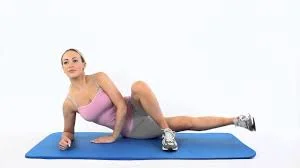
Steps To Follow:
- While you’re on your side, place your upper arm in front of your chest to support your upper body.
- The sole of your top foot should sit in front of the bottom leg when you cross your top leg over the top of your bottom leg.
- Lift your lower leg slowly and deliberately until it is just a few inches off the floor.
- Controlfully descend and then repeat.
Lateral Lunge
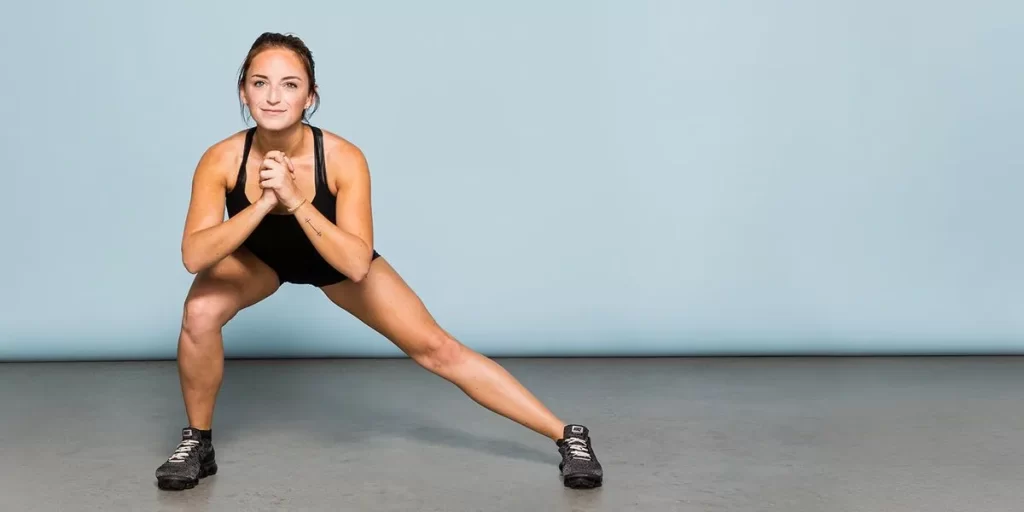
Steps To Follow:
- Place your feet hip-width apart as you stand.
- Step out to the side with your left leg, bending it until it is 90 degrees bent.
- Then, press your hips back and lower yourself.
- It should take around a second to complete.
- To begin, push back.
- Alternating is an option, as is performing all repetitions on one side before switching to the other.
Resistance Band Squat Walk
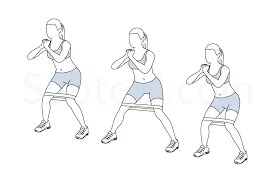
Steps To Follow:
- Just above your knees or ankles, pull or knot the resistance band around your legs.
- Make sure your feet are spread enough for you to feel the heat.
- Squat down by lowering your rear end towards the earth.
- After taking four or five side steps, switch directions and repeat.
Clams
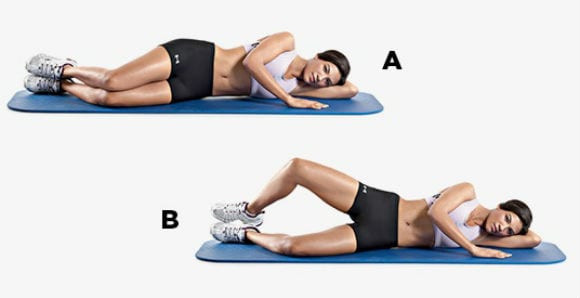
Steps To Follow:
- Place yourself on your side on the ground to begin.
- Raise your head to rest on the ground-level arm.
- Make a 45-degree angle with your hips and a 90-degree angle with your knees to begin.
- Maintain the pressure on your foot while pushing your knee away from your core.
- When you reach the peak of the exercise, pause, tense your abs and glutes, and then lower yourself back to the floor. Repeat.
Resistance Band Clamshells

Steps To Follow:
- Tightly wrap the resistance band around each thigh, a little above the knees, and fasten it firmly.
- Assume a lateral position with your elbow tucked under your shoulder and your hips and knees lined up.
- Lift your right foot off the ground and open your left knee into a diamond form while keeping your feet together.
- To close your legs, bring your left knee back down without bringing your right foot to the floor.
Step Ups
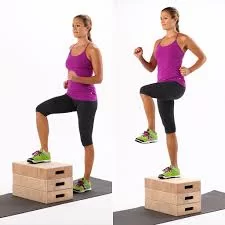
Steps To Follow:
- Your knee should track slightly outward while your heel stays flat on the step.
- As you advance, maintain a tall and proud torso.
- To get yourself to stand on the step, brace your core and extend your leg.
- Lower your leg carefully to the ground while maintaining your head and shoulders back.
Jumping Jacks
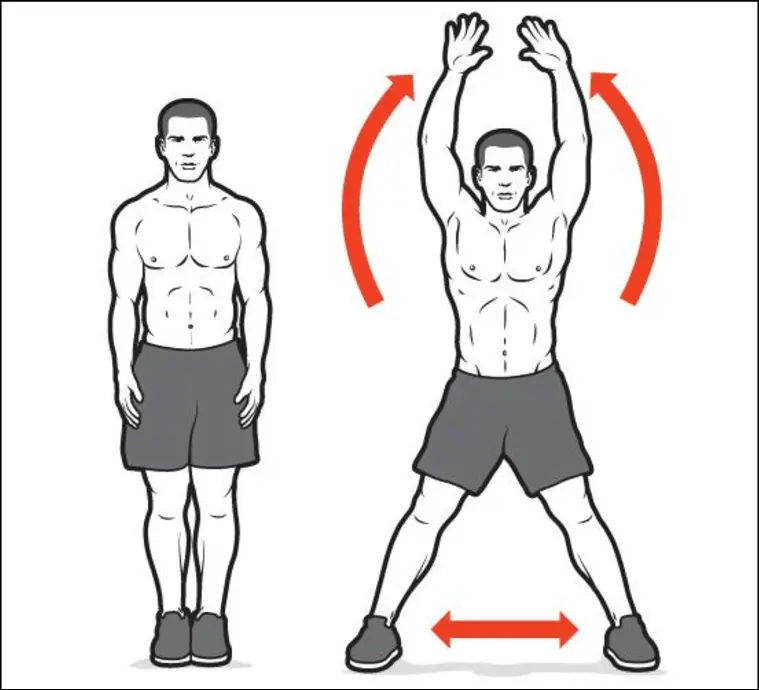
Steps To Follow:
- Leap to a wide stance and touch the ceiling with your fingertips.
- Return to standing and place your arms by your sides. Repeat.
Barbell Split Squat
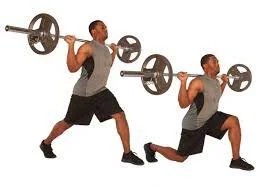
Steps To Follow:
- Using an overhand grip, place the barbell on your shoulders and push it over your head while maintaining your elbows below the bar.
- Next, step forward with your right leg.
- Now stop swaying.
- While maintaining the knee above the toe, descend into a 90° lunge.
- Return to the starting location and do it again. Be careful to complete both sides.
Bulgarian Split Squat
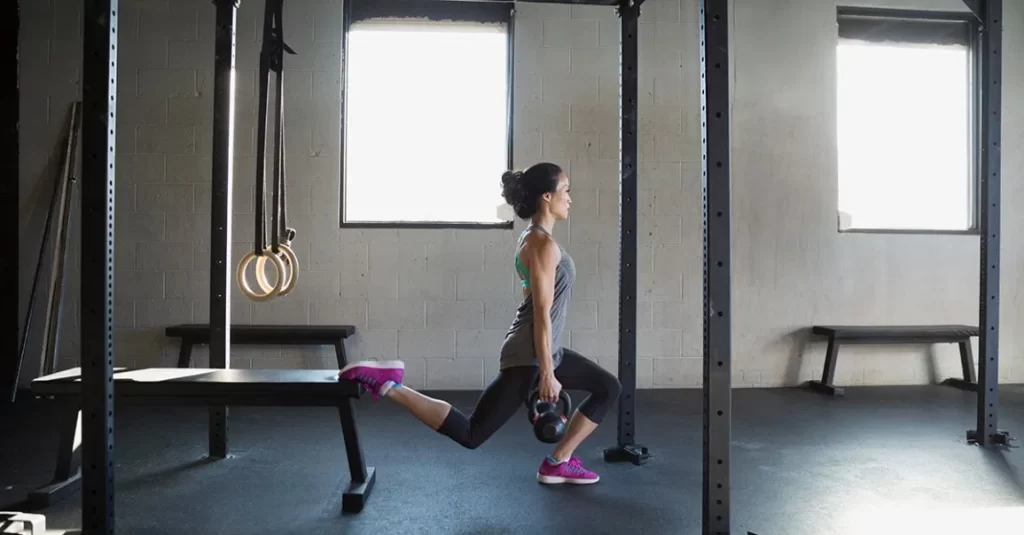
Steps To Follow:
- Hold a dumbbell in each hand while facing away from a bench.
- Place your foot on top of the bench and stretch your right leg back.
- Return to your starting standing posture after bending your front knee until your back leg’s knee is nearly touching the ground.
Forward Lunge

Steps To Follow:
- To stay balanced, keep your back straight, contract your core muscles, and place your hands on your hips.
- With your right foot, step forward forcefully, bending your knee until your right thigh is parallel to the floor.
- Don’t allow the knee to come into contact with the floor, but do let your back heel rise.
- Repeat with the opposite leg, going back to the beginning position.
Pulse Lunge
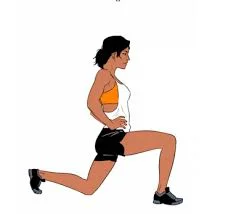
Steps To Follow:
- Place your front knee over your toes and your back knee up a few inches off the ground to form a lunge.
- Keep your leg and core muscles working as you rise a few inches, but avoid raising yourself all the way up.
- Retrace your steps and repeat the pulse motion.
Reverse Lunge
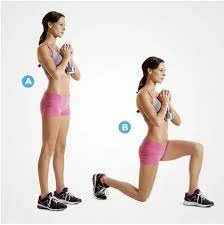
Steps To Follow:
- To stay balanced, keep your back straight, contract your core muscles, and place your hands on your hips.
- With your right foot, take a large step backward and bend your knee until your right thigh is parallel to the ground.
- Don’t allow the knee to come into contact with the floor, but do let your back heel rise.
- Return to the beginning position and repeat on the opposite side.
Kettlebell Single-Leg Deadlift
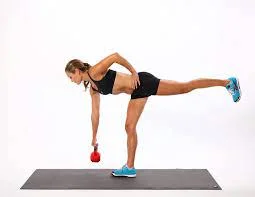
Steps To Follow:
- Place one foot on the mat, knee slightly bent, and place the other foot slightly elevated.
- Using one hand, hold a free weight, such as a kettlebell or dumbbell.
- It needs to be on the same side as the foot that is slightly elevated.
- Press your rear leg and buttocks back until your upper body creates a straight line, and hinge at the hips.
- To stand back up, use your glutes, making an effort to maintain your elevated leg off the ground. Repeat.
Single-Leg Deadlift
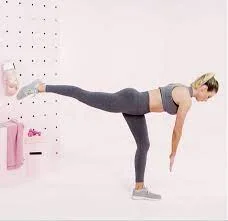
Steps To Follow:
- Place one foot on the mat, knee slightly bent, and place the other foot slightly elevated.
- Press your rear leg and buttocks back until your upper body creates a straight line, and hinge at the hips.
- To stand back up, use your glutes, making an effort to maintain your elevated leg off the ground. Repeat.
Goblet Squat
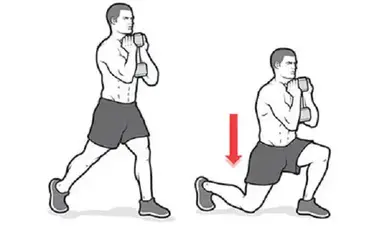
Steps To Follow:
- With your toes slightly turned out and your feet slightly wider than shoulder-width apart, stand with a weight in front of your chest.
- Assume the position of a chair by bending your knees and lowering your rear end while maintaining your weight on your heels.
- Make sure your shoulders don’t round as you descend by using your core and pulling your weight back through your hips.
- Push yourself back up to the starting position by driving through your heels after pausing for a moment when your thighs are parallel to the floor.
Sumo Squat
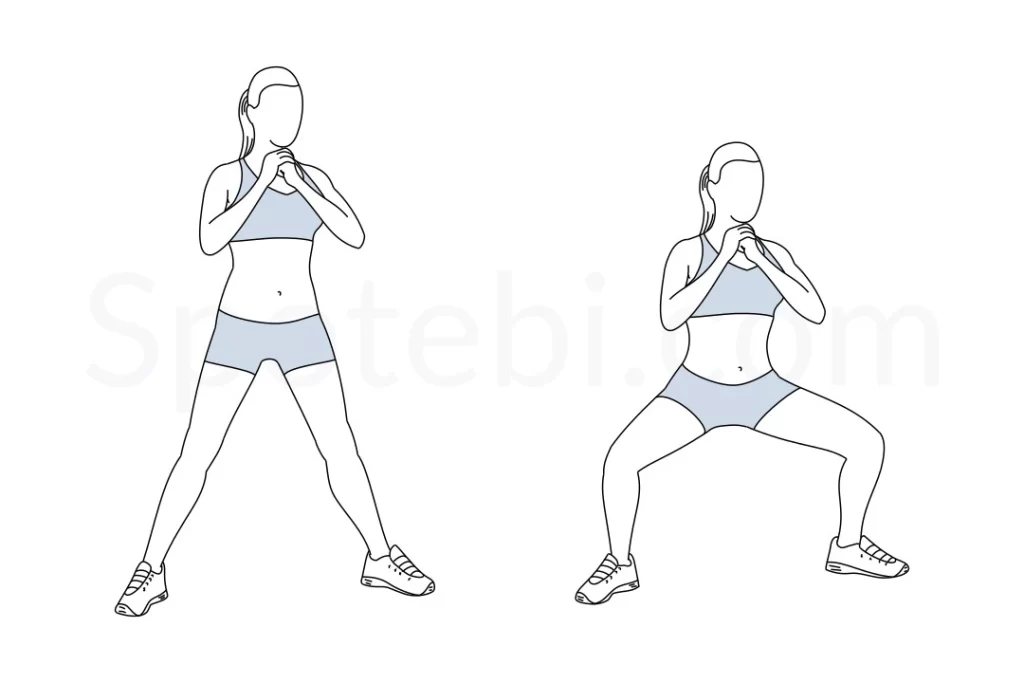
Steps To Follow:
- With both toes pointed slightly outside, have a wide stance.
- When your quads are parallel to the floor, bend your knees.
- Return to standing posture by pushing through your heels and straightening your legs.
Goblet Squat with Pause
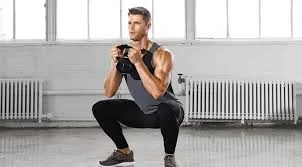
Steps To Follow:
- With your toes slightly turned out and your feet slightly wider than shoulder-width apart, stand with a weight in front of your chest.
- Assume the position of a chair by bending your knees and lowering your rear end while maintaining your weight on your heels.
- Make sure your shoulders don’t round as you descend by using your core and pulling your weight back through your hips.
- Drive through your heels to bring yourself back up to the beginning position after pausing for two or three counts when your thighs are parallel to the floor.
Barbell Squat
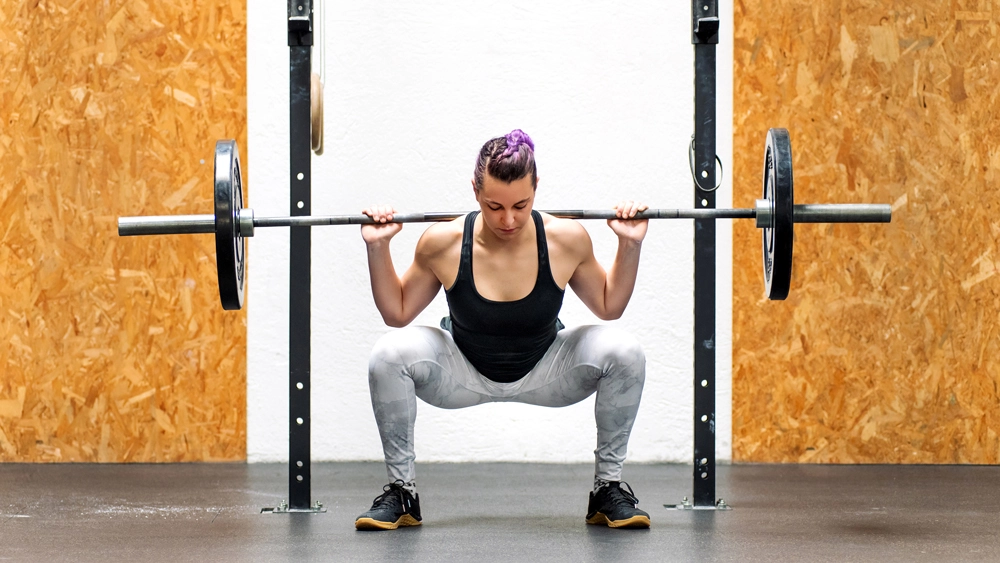
Steps To Follow:
- In a squat position, place your feet slightly wider than hip-width apart, gently pointing your toes outward.
- Grasp the bar with an overhand hold across your upper back.
- To allow the bar to rest comfortably on the shelf formed by your shoulder blades, pull your shoulders back.
- Inhale deeply through your stomach.
- Lower your body as far as you can without allowing your knees to collide, maintaining a tiny arch in your lower back.
- Bend your knees after pushing your hips back to start the action.
- Keep your torso as straight as you can.
- After pausing at the bottom of the motion, turn around and go back to the beginning.
Kettlebell Sumo Squat
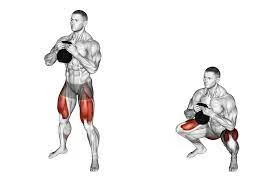
Steps To Follow:
- Maintain a wide stance with both toes pointed slightly outward while holding a weight in front of you.
- When your quads are parallel to the floor, bend your knees.
- Return to standing posture by pushing through your heels and straightening your legs.
Swiss Ball Squat
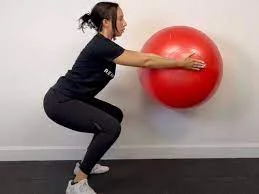
Steps To Follow:
- With your arms extended straight in front of you, grip a Swiss ball while standing tall.
- When your quads are parallel to the floor, bend your knees.
- Return to standing posture by pushing through your heels and straightening your legs.
- Throughout the game, try to maintain the position of the Swiss ball.
- This exercise works your thighs and core.
Glute Bridge
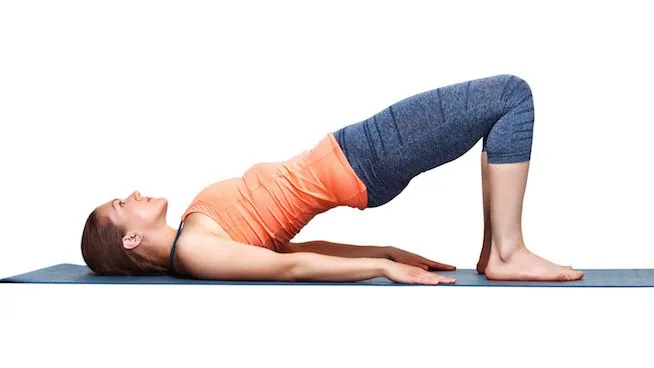
Steps To Follow:
- With your feet flat on the ground and your knees bent, lie on your back on a mat.
- Place your feet hip-width apart.
- Squeeze your glutes and press your heels into the ground as you exhale to raise your hips toward the ceiling.
- After pausing for a time at the top, slowly return to the mat by lowering your shoulders, lower back, and then your buttocks.
- That amounts to one rep.
Glute Kickbacks
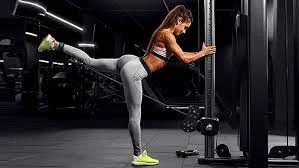
Steps To Follow:
- Optional: Wrap a resistance band around your ankles or place it directly above your knees on your lower thighs.
- Place your feet hip-width apart as you stand.
- Utilize a stable chair or wall to assist with your balance.
- Maintain a long spine and contract your glutes and core.
- Maintain a straight right leg and raise it behind you.
- Lower yourself gradually to tap the floor softly.
- After you’ve completed the repetitions, remember to swap sides and repeat.
Ball Squeeze

Steps To Follow:
- Place your feet hip-width apart as you stand.
- Put a ball for a workout in between your inner thighs.
- Sit in a high squat by pushing your booty back.
- Ten seconds of thigh pressure on the ball; reset and repeat.
Curtsy Lunge
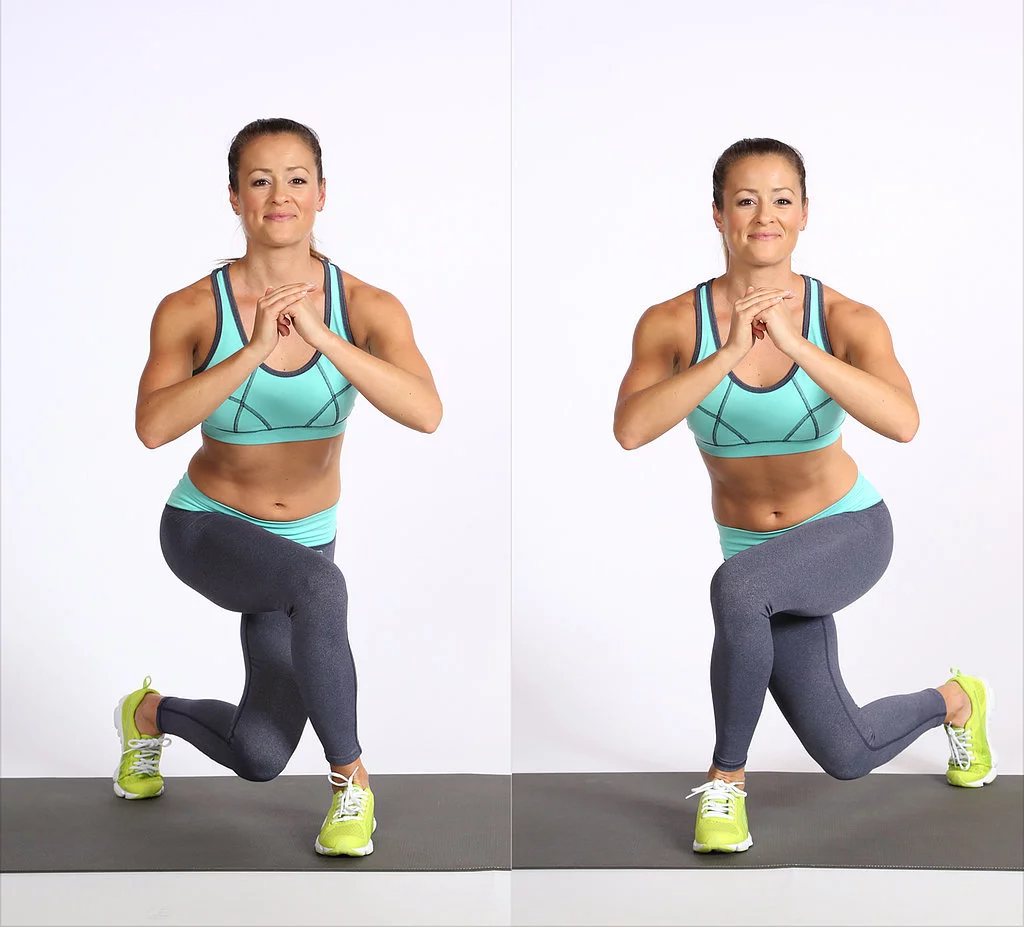
Steps To Follow:
- Place your arms at your sides and your feet hip-distance apart as you stand.
- Lift your chest and make a lunge with your right foot behind your left leg.
- Drop to a position where your back knee is only inches above the floor.
- Return to upright posture slowly.
- On the other side, repeat.
Lateral Lunge

Steps To Follow:
- Place your arms at your sides and your feet hip-distance apart as you stand.
- Step your right foot out as wide as you can while maintaining an upright torso.
- Reposition the spoils and kneel down on one side.
- To raise yourself back up to a standing posture, contract your glutes.
- On the other side, repeat.
Lateral Squat Walk
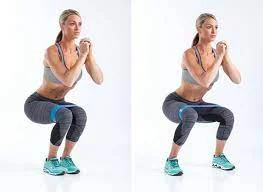
Steps To Follow:
- Optional: Wrap a resistance band around your lower thighs, just above your knees, or around your ankles.
- Place your feet hip-width apart as you stand.
- Push the booty back and descend into a squat while maintaining a tall spine and an erect chest.
- Maintaining tension with the band, take ten cautious steps to the right while remaining in your squat.
- After you’ve reset, take ten steps to the left while maintaining your squat posture.
Plié Squat
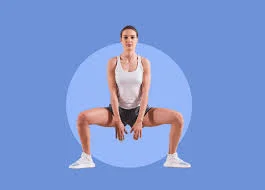
Steps To Follow:
- Start with your feet turned outward and your legs spread wide.
- As you sink down, your legs will open up and you will be able to concentrate more on your inner thighs.
- Keep your spine long, tuck in your tailbone, and engage your core.
- At the bottom of the squat, your knees should be exactly over your ankles.
- As you stand back up and straighten your knees, contract your glutes.
- Optional: As you reach the bottom of the squat, pulse up and down by one inch.
Inner Thigh Heel Pulses
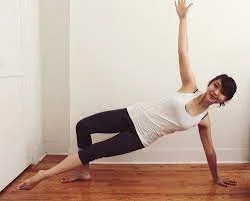
Steps To Follow:
- Make sure your head, hips, and heels are all on one long plane while you lie on your side.
- To add more difficulty, you can raise the upper arm to the ceiling or place your fingertips on the ground to support the body.
- Squeeze your heels together, contract your glutes and core, and twist your toes outward.
- Raise both legs approximately one inch above the ground, attempt to hold the position for ten seconds, and then lower them back down.
- Remember to repeat on the opposite side.
Inner Thigh Raise
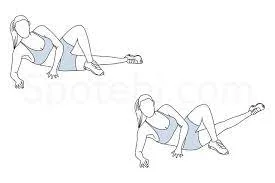
Steps To Follow:
- Recline to your right side. To align your head, hips, and heels in a single, long plane, raise yourself up on your right elbow.
- To steady your body, place the fingertips of your left hand on the floor in front of you.
- Your left leg might be in front of or behind your right leg, but it should be bent over your right such that your left foot is on the ground.
- Activate your glutes and core.
- Leg 2 should be raised 2 inches and then lowered 2 inches while maintaining a straight lower leg.
- After completing the repetitions, switch to the opposite side.
Sliders
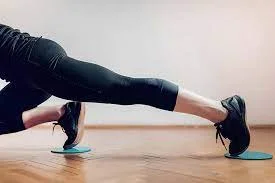
Steps To Follow:
- On a smooth surface, place a small hand towel or exercise slider below one of your shoes.
- As you lower yourself into a squat, push your leg out to the side and away from your body with the slider below it.
- Robinson advises getting as low and broad as you can with the maneuver for optimal outcomes.
- Perform three sets of ten repetitions on each side.
Fire Hydrants
Steps To Follow:
- While on all fours, make sure your back is flat like a tabletop, your belly button is drawn in, and your core is active.
- Lift one leg slowly up and out to the side while maintaining your knees bent and your hips steady.
- With control, reposition yourself to the beginning.
- Do 20 repetitions on each side.
Benefits of inner thigh workouts
- Before delving into the inner thigh workouts, let’s pause to acknowledge the many advantages of working on the hip adductor muscles.
- As you exercise these muscles, you begin to get the following advantages:
Lowered risk of injury. A groin injury can be prevented in part by having strong adductors. Research indicates a clear correlation between an athlete’s risk of injury and the strength and flexibility of this particular muscle group.
Improved balance. The adductor muscles support your posture in addition to smaller muscles in your legs and hips. Research demonstrates that building strength in these muscles prolongs one’s capacity for standing and balance.
Improved explosive motions. Running, jumping, and side-to-side motions are examples of explosive activities that are aided by this muscle group.
Stronger, leaner legs. Strong legs provide you with greater self-assurance and the ability to take on any task.
Safety and Precautions
- These exercises for shaping the inner thighs should be safe for everyone, according to our specialists.
- Before doing the exercises, you should speak with your physician, a physical therapist, or a licensed personal trainer if you have any back or lower body ailments.
- Furthermore, cease moving right away if you feel any pain or discomfort at all.
- To avoid overly pain and injury, make sure you increase your intended exercise volume gradually.
- Try, for instance, just two or three exercises on the first day, and then take a day or two off.
- One new activity at a time, include it into your regimen, and take days off as needed in between.
- Use mobility activities such as foam rolling, stretching, or other methods to counterbalance the muscle effort.
- Use good posture and form, and concentrate on actively using your glutes and core with every movement to avoid lower-back discomfort. Do not hunch over.
- Finally, always wear appropriate footwear, such as supportive training shoes, when utilizing weights.
Conclusion
In conclusion, achieving total lower body strength, stability, and aesthetic goals can be aided by efficient inner thigh training. You may build muscular tone and definition in the inner thigh region by including specific workouts such as leg lifts, squats, lunges, and lateral motions. But it’s crucial to keep in mind that spot reduction is not a foolproof fat-loss strategy. For optimal results in terms of inner thigh toning and general fitness, a comprehensive regimen that includes aerobic activity, full-body strength training, and a balanced diet is recommended. When it comes to tracking progress, consistency is key.
Achieving your inner thigh goals requires gradually increasing the resistance and intensity of your workouts, keeping good technique, and allowing your muscles enough time to recuperate. Incorporating flexibility exercises, being hydrated, and paying attention to your body can also help you avoid injuries and get more out of your workouts.
In the end, while working out your inner thighs might help you achieve the right muscle tone, it’s still crucial to have a holistic approach to fitness and prioritize your general health and well-being. Before beginning any new workout regimen, always get advice from a fitness expert or healthcare practitioner, particularly if you have any underlying medical issues or concerns.
FAQ
This can change based on your genetics, nutrition, degree of fitness right now, and how consistently you work out. But, after a few weeks, you could see changes in the strength and tone of your inner thighs. Therefore, exercise patience, maintain consistency, and concentrate on overall development as opposed to a particular timeline.
Although many may have this as their objective, a thigh gap is not a reliable indicator of physical fitness or attractiveness. It is more crucial to concentrate on general strength, fitness, and body confidence rather than aiming for a specific physical characteristic. Recall that you are special. Instead of focusing on meeting the criteria of beauty set by society, aim for overall strength and well-being.
You don’t have to work out your inner thighs all the time. The inner thighs require downtime and recuperation in between sessions, just like any other muscle group. It is normally advised to give yourself at least 48 hours of recuperation in between specific activities for the same muscle group. Overtraining can impede your growth, cause muscular fatigue, and raise your risk of injury.
The stabilization of the pelvic and hip joints is mostly dependent on the inner thigh muscles. Your legs and pelvis should remain properly aligned when your inner thigh muscles are strong. Strong inner thighs also improve balance and stability in a variety of exercises and sports, such as tennis, basketball, and other activities.
Exercise for the inner and outer thighs can help tone and develop the muscles in those regions, which may improve the look of the legs. It’s crucial to remember, though, that spot reduction that is, focusing fat loss on certain areas is not achievable with only exercise.
References:
- Top 10 Dips Exercises. (2023, November 17). STYLECRAZE. https://www.stylecraze.com/articles/dips-exercises/]
- Nasm-Cpt, S. S. M. R. C. (2023, February 6). 10 Best Inner Thigh Exercises, According to Fitness Pros. Good Housekeeping. https://www.goodhousekeeping.com/health/fitness/g32827617/inner-thigh-exercises/
- McEntee, K., & Sayer, A. (2021, October 17). 10 Effective Inner-Thigh Exercises for Strong, Sculpted Legs. Byrdie. https://www.byrdie.com/best-inner-thigh-workouts
- Sutariya, H. (2023, December 13). 20 Best Workouts for Inner Thighs – Mobile Physio. Mobile Physiotherapy Clinic. https://mobilephysiotherapyclinic.in/20-best-workouts-for-inner-thighs/

